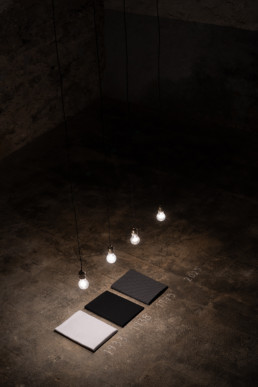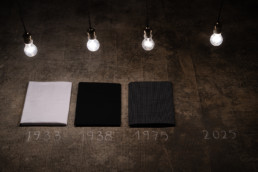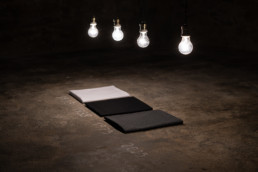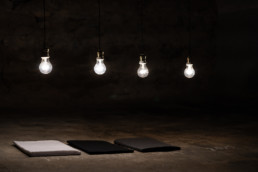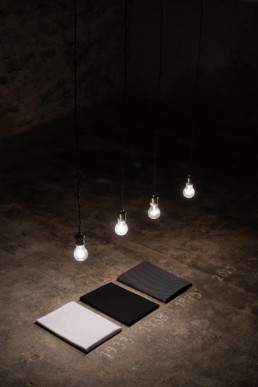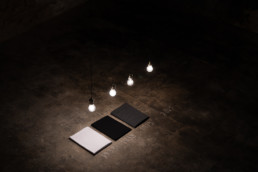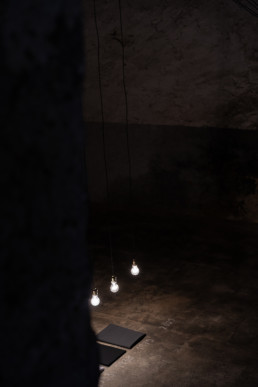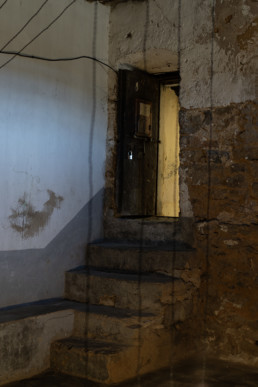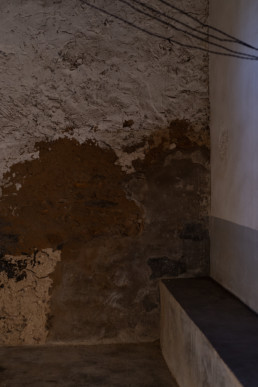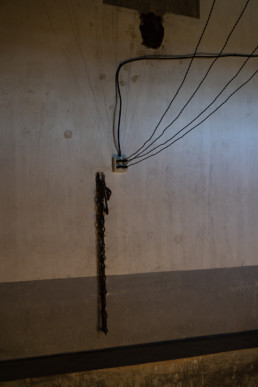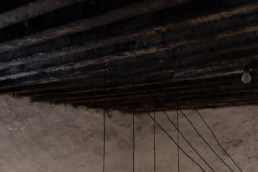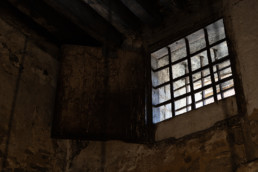NO-DUELO. Presencia, desvanecimiento, anhelo e incertidumbre en la lucha feminista española.
ART
NO-DUELO. Presencia, desvanecimiento, anhelo e incertidumbre en la lucha feminista española.
NO-MOURNING. Presence, fading, longing, and uncertainty in the Spanish feminist struggle.
Residencia de arte AVAN 05, septiembre del 2025, Vilafranca.
Después de un episodio traumático la primera generación afectada ve, pero difícilmente puede escuchar y menos hablar. La segunda generación no ve, pero sí que empieza a escuchar. No obstante, teniendo el suceso tan cerca el deseo o inercia es el de querer salir de aquello que ha generado tanto de daño, por lo tanto, hay una carencia de espacios para habla sobre lo que pasó. Es ya la tercera generación la que sí que tiene la voz para decir y contar. Ahora bien, aquí se está lejos en la línea del tiempo y, en la mayoría de los casos, toca hacer una reconstrucción aproximada a partir de diferentes relatos que se retroalimentan y que te cuentan verdades o falsedades a medias que, en ambos casos, son una fuente que permite leer entre líneas y de manera genérica, borrosa, el qué, cuándo, cómo, dónde…
La estrategia del silencio inculcada a raíz de los episodios traumáticos en el periodo franquista ha sido muy destructiva y profunda a escala transgeneracional. Tanto que, hoy en día, en periodo democrático, todavía dificulta el proceso para realizar un luto con el cual poder recordar, reconocer, integrar lo que se ha pasado y proyectar maneras de ser y estar que fomenten una sociedad respetuosa, libre y feminista en la actualidad y en el futuro. La represión de esta época fue devastadora, pero más aún si eres mujer. Más aún si eras mujer que se opuso al régimen o vinculada a una persona que se oponía. En este periodo de la historia se inculcó el sometimiento político patriarcal, misógino y machista, que hizo que las mujeres fueran reprimidas doblemente: por formar parte de la sociedad española y por formar parte del género femenino.
Yo soy de la tercera generación, tal vez por eso fuí a Vilafranca con el deseo de hacer un proyecto para darle voz a las historias de las mujeres de esta localidad, que han sufrido represión franquista, y plasmar coómo fueron sus historias de supervivencia, cómo se hicieron cargo solas de preservar la vida de la familia siendo que, en la mayoría de los casos no había recursos, estaban sometidas a represión y se estaba en el punto de mira de una comunidad donde nada ni nadie se podía escapar.
A lo largo de la semana de investigación he observado que la herida todavía está muy abierta en las primeras generaciones de villafranquinas. También que, además de las recomendaciones, hace falta tiempo para que te conozcan y hacer ver que las intenciones son buenas. Durante esta semana he hablado con las historiadoras e historiadores más especializados en materia de represión franquista de València, que me daban datos más técnicos o vinculadas a documentos oficiales y a los hombres, más que a las historias cotidianas de las mujeres. Pero, por lo que respecta a los testigos: silencio. He cerrado la investigación con una reiteración en las ausencias de las historias, cotidianas o no, que tienen que ver con la represión impuesta a las mujeres.
Silencio, qué fuerte y alto suenas. Silencio que hoy en día todavía es una prisión que anula la plena libertad de expresión y nos muestra una línea del tiempo dónde: en 1933 luz o blanco, con el voto femenino en las elecciones españolas se marcó una apertura en los derechos de las mujeres; en 1938 duelo o negro, en Vilafranca con la instauración del régimen franquista y cayendo cualquier indicio feminista; en 1975 semiduelo o un intento de, empezó una supuesta transición hacia la democràcia; y hoy, en 2025 nada o incertidumbre, todavía no ha habido una plena restauración del sistema. Todavía estamos atravesadas por la presencia, desvanecimiento, anhelo e incertidumbre en la lucha feminista española.
AVAN 05 art residency, September 2025, Vilafranca.
After a traumatic event, the first generation affected sees, but can hardly hear, much less speak. The second generation doesn’t see, but they do begin to hear. However, with the event so close, the desire or inertia is to want to escape from what has caused so much damage, therefore, there is a lack of spaces to talk about what happened. It’s the third generation that does have the voice to speak and tell. However, this is far away on the timeline, and in most cases, it’s necessary to make a rough reconstruction based on different stories that feed off each other and tell you half-truths or half-falsities. In both cases, they are a source that allows us to read between the lines, in a generic, blurred way, the what, when, how, where…
The strategy of silence instilled in the wake of the traumatic episodes of the Franco era has been deeply destructive and profound on a transgenerational scale. So much so that, today, in a democratic era, it still hinders the process of mourning, allowing us to remember, acknowledge, integrate what has happened, and project ways of being and existing that foster a respectful, free, and feminist society now and in the future. The repression of this era was devastating, but even more so if you are a woman. Even more so if you were a woman who opposed the regime or linked to someone who did. During this period of history, patriarchal, misogynistic, and sexist political subjugation was instilled, resulting in women being doubly repressed: for being part of Spanish society and for being part of the female gender.
I’m a third-generation woman, perhaps that’s why I went to Vilafranca with the desire to pursue a project to give voice to the stories of the women of this town, who suffered under Franco’s repression, and to capture their stories of survival, how they took charge of preserving family life on their own, despite the fact that, in most cases, there were no resources, they were subjected to repression, and were the target of a community where nothing and no one could escape.
Throughout the week of research, I observed that the wound is still very much alive in the first generations of Vilafranca women. I also observed that, in addition to recommendations, it takes time for them to get to know you and to show that your intentions are good. During this week, I spoke with the most specialized historians in Valencia on Franco’s repression, who gave me more technical information or information linked to official documents and the men themselves, rather than the everyday stories of the women. But, as far as the witnesses are concerned: silence. I concluded the investigation by reiterating the absence of stories, everyday or not, that have to do with the repression imposed on women.
Silence, how loud and strong you sound. Silence that today is still a prison that nullifies full freedom of expression and shows us a timeline where: in 1933, light or white, with the female vote in the Spanish elections, a breakthrough in women’s rights was marked; in 1938, mourning or black, in Vilafranca with the establishment of the Franco regime and the collapse of any trace of feminism; in 1975, half-mourning or an attempt at it, a supposed transition to democracy began; and today, in 2025, nothing or uncertainty, there has still not been a full restoration of the system. We are still traversed by presence, fading, longing, and uncertainty in the Spanish feminist struggle.
Year
2025
Materials
Vilafranca prison space, 4 light bulbs with the corresponding electrical circuits, 3 cotton fabrics measuring 1.38 x 1.15 m (white, black and black with small white dots) (the folded fabrics measure 32 x 24 cm) and the text written in white chalk (1933 / 1938 / 1975 / 2025).
Dimensions
3’7 x 4,5 x 5 m
PHOTOGRAPHIES
Mar Juan Tortosa

